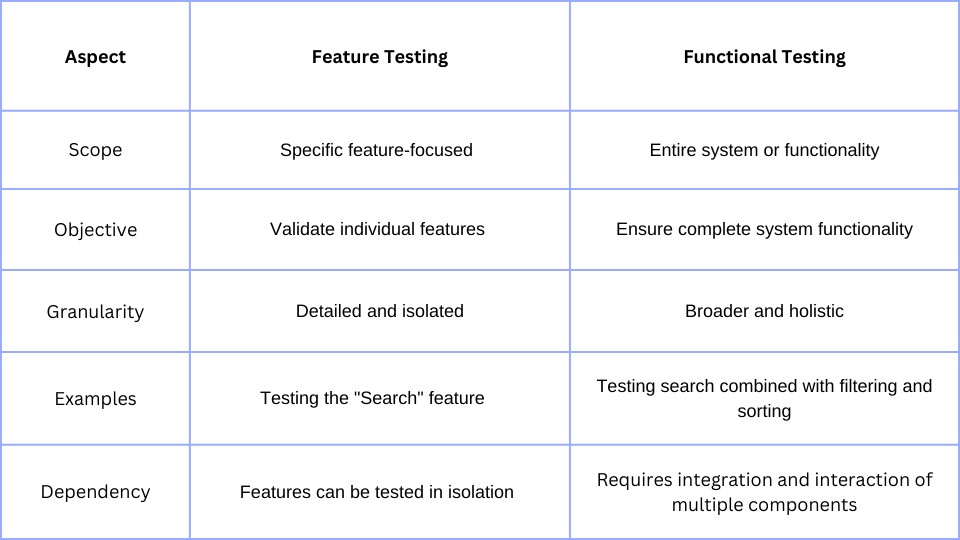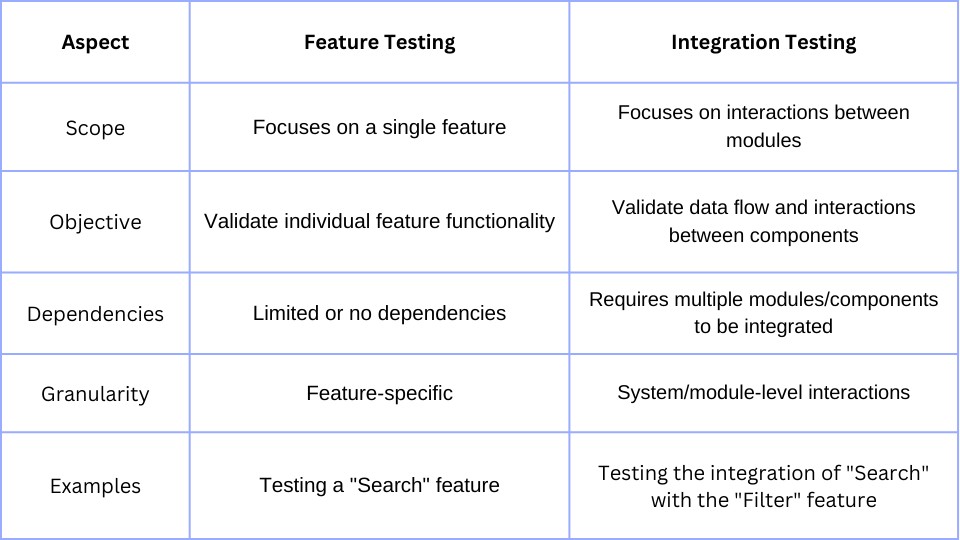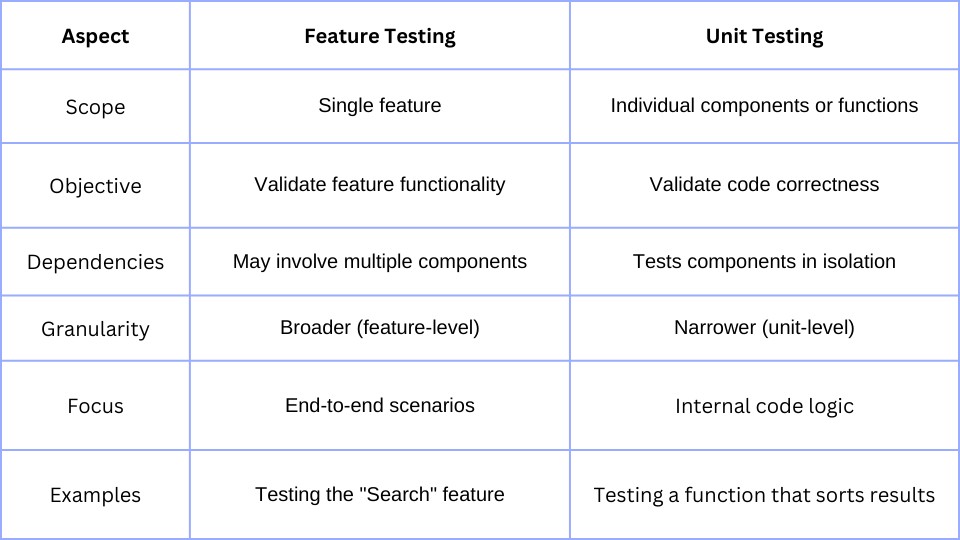Feature Testing
Quality control is important in software development. Every software product, from the smallest startups to tech giants, intends to provide a smooth, consistent, and hassle-free interaction. Feature testing is a core part of this process. It evaluates the usability and stability of an application’s features under various conditions.
What is Feature Testing?
Feature testing is a type of software testing that verifies the functionality of an application or system based on the requirement specifications. Feature testing in software testing aims to ensure that the software behaves as expected and meets the intended business and user needs.
To implement an effective feature-testing strategy, you need to use both automated and manual testing features.
How to Approach Feature Testing
Developers can follow the steps below to execute a feature test. These steps include both automatic and manual features.
- Define the scope and objectives: Identify what you aim to test and the expected outcome. Clarify the feature’s requirements and functionality specifications.
- Create a separate test environment: Testing must be done in a separate environment that is close to the production environment and has a separate set of test data.
- Create test cases: Complete requirements regarding the inputs, expected results, and situations needed for the feature testing should be designed. A best practice is to include both positive and negative test cases.
- Automate where possible: Repetitive tasks can be automated using tools like Selenium and Cypress, which provide quicker responses and lower human factor errors. However, it is important to consider manual testing for tasks that involve human feelings or understanding the user.
- Execute tests: Execute the test cases on the given feature and note any discrepancies with expected results.
- Analyze and document results: When all the test sessions are finished, evaluating the testing outcome and reporting any faults encountered is imperative.
- Fix and retest: Address any identified issues, re-running tests to confirm that the fixes resolved the problems without introducing new bugs.
Why Feature Testing is Important
Feature testing in software serves as a safety net in the development process. It ensures each feature meets the desired requirements and integrates with the rest of the system. Key benefits are:
- Early bug detection: By isolating and testing features individually, developers can identify and fix issues earlier, preventing costly fixes later in the development cycle.
- Improved product quality: Each feature is thoroughly checked, reducing the chance of bugs or user frustrations arising once the application is live.
- Time and cost efficiency: Catching issues during feature testing saves time and resources that might otherwise be spent on rework or debugging at later stages.
- Enhanced user experience: A thoroughly tested feature is more likely to perform consistently and meet users’ expectations, fostering a positive user experience.
[blog-subscribe]
Comparison with Other Testing Methods
Functional, integration, and unit testing are three types of testing that might feel similar to feature testing. However, these testing methods differ from feature testing in the following ways:
Feature Testing vs. Functional Testing

Feature Testing vs. Integration Testing

Feature Testing vs. Unit Testing

The Role of Feature Testing in Agile and DevOps
Feature testing is important in Agile and DevOps approaches, where features tend to be researched, developed, tested, and delivered within a short time. In such cases, feature testing should be quick, flexible, and often revisited in time with the fast-paced nature of development. Due to the demands of speed and quality execution in Agile and DevOps working modes, automation testing alongside feature testing is both advantageous and necessary.
Tools for Feature Testing
There are various tools available to streamline the feature testing process:
- Selenium: A powerful tool for automating web application testing across different browsers.
- Cypress: An end-to-end testing framework particularly well-suited for modern web applications.
- JUnit and TestNG: Widely used frameworks for unit testing in Java; also useful for feature-specific tests.
- Postman: Ideal for testing APIs and ensuring that backend functionalities operate as expected.
- Jira and TestRail: For managing test cases, tracking progress, and documenting results.
Conclusion
Feature testing plays an indispensable role in software quality assurance as one of the most efficient ways to evaluate the performance and quality of a single feature. Developers can guarantee that each feature will work as expected and can be effectively incorporated into the rest of the application by testing the feature independently.
A good feature-testing approach that uses both automated and manual testing is important for creating high-quality applications. By combining these methods, developers can make sure features work properly, are easy to use, and meet customer needs. This helps build applications that are reliable and work well in real-life situations.